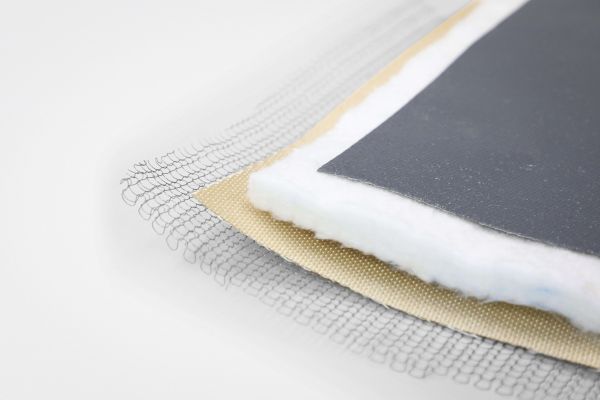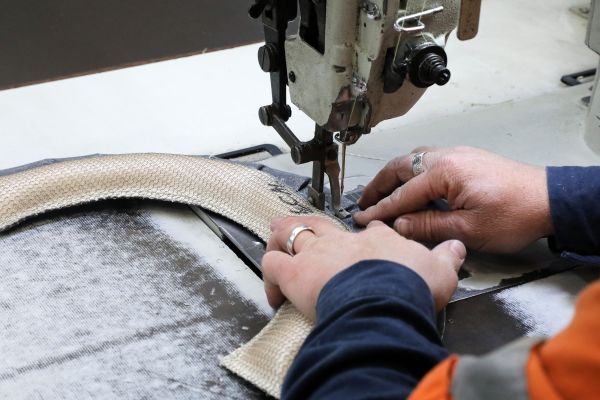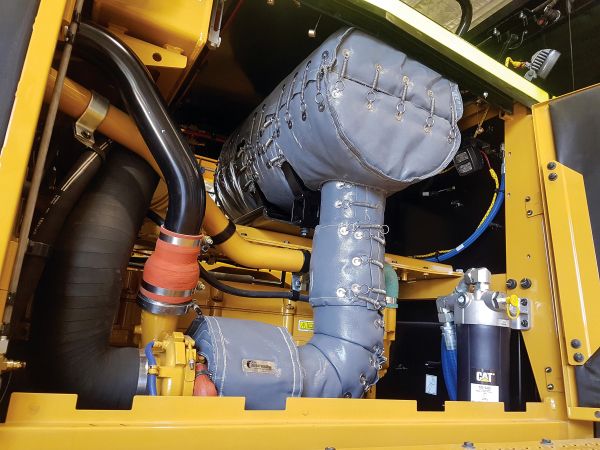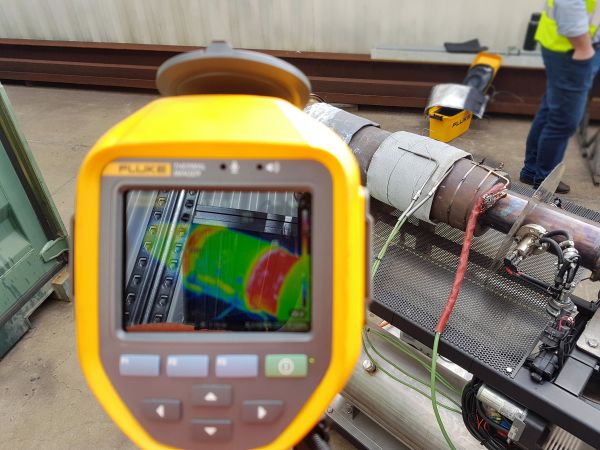We understand the importance of machine availability. Your KPIs suffer from unplanned downtime, early component failure, and restricted parts availability. As a result, Aletek has developed specialised OEM replacement products to resolve these problems.
Tailor-made Upgrades
Let us help you reduce downtime
Installation assistance
Expert technical support
Testing and reports
Exhaust-related fleet audits
Design criteria
- Protect heat-critical engine components and exhaust pipes from extreme temperatures for fire mitigation
- Keep surfaces under 150°C following NSW MDG 15 guidelines
- The product must be easy to install, snug-fitting and non-itch
- A maintenance crew-friendly design without sharp internal foils
- Prevent liquid and debris ingress – fish scale design
- Simplify installation using fewer blanket pieces – lobster-back design

Material selection
We manufacture our thermal insulation blankets from high-quality raw materials. There are four layers, each serving a specific purpose:
- Silicone-coated outer – Protective layer made of fibre reinforcement with temperature-treated silicon on both sides. Resists oil absorption while providing strength, temperature resistance, and flexibility.
- Silica insulation – Provides superior heat dissipation up to 1700°C. With these properties, blankets last longer and allow itch-free maintenance.
- Silica cloth – Protects heat-dissipating silica from dirt, oil, and contaminants. The cloth is rated to over 1000°C.
- Stainless steel mesh – This internal-facing mesh reinforces and maintains the blanket shape. The steel provides excellent corrosion, heat, and abrasion resistance.
Product design
Design Team process
- Engine-part and exhaust blanket configurations are machine-specific
- Front-end design phase using 3D scans and onsite measuring
- Product design using CAD and 3D printing if needed
- Our Thermal Division Manager oversees design approvals and the creation of blanket pattern templates
R&D improvements
- Developed a custom product based on our test result learnings
- Decreased the coating thickness to reduce the calorific value (potential to burn)
- Minimise joins and overlapping sections to reduce heat escaping
- Thermal imaging helps designers understand heat sources and challenges

Thermal blanket manufacturing
We manufacture our thermal blankets with our skilled team using lean manufacturing methods. Our blankets are Australian-made and supported by quality control procedures.
- We create an order and QA documentation and load the job into our scheduling system
- After selecting the right design, we set up the pathing and nesting for cutting
- Our German CNC machine cuts, labels, and creases blankets ready for assembly
- We stack the four raw layers for a multi-lane single-piece flow (lean manufacturing)
- This outer layer stacks into a single-piece flow (lean manufacturing)
- The first sewer stitches the outer layer, joining the four blanket layers
- Component sewers produce insulation and part pieces (eg. three pieces for a turbo)
- A final sewer joins these components into the completed part
- The pinning team add anchors, fasteners and springs
- After a QA check, the blankets are packaged and dispatched
Continuous improvement loop
- We make design improvements to resolve installation issues
- Feedback from clients helps improve our designs
- Fleet audits provide additional insights into blanket endurance
Subscribe
Is there a project you need help with?
Maybe you want to upgrade your fleet to reduce downtime. We’ve got dedicated Business Development Managers to help you meet your onsite goals. Get in touch to learn more and ask about our site-specific parts catalogues.
"*" indicates required fields











